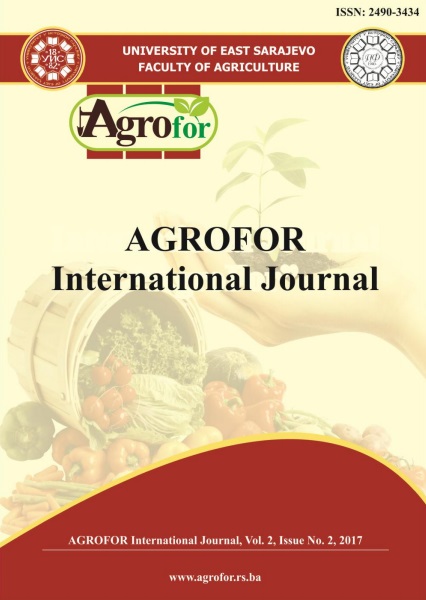EFFECTS OF DIFFERENT TYPES OF CYTOPLASM ON THE KERNEL ROW NUMBER OF MAIZE INBRED LINES
DOI:
https://doi.org/10.7251/AGRENG1702155JAbstract
The aim of the present study was to determine effects of both, different types of
cytoplasm (cms-C, cms-S and fertile) and environmental factors on the kernel row
number of 12 maize inbreds lines. The trial with inbred lines was set up in two
locations (Zemun Polje-Selection field and Zemun Polje-Školsko dobro) in 2013
and 2014. Moreover, the three-replicate trials were set up according to the
randomised complete block design within each type of cytoplasm. Each plot within
the replicate consisted of four rows. Fertile versions of inbred lines were sown in
two border rows and they were pollinators for their sterile counterparts. Statisticbiometric
data processing was based on mean values per replicate and included the
analysis of variance. According to this analysis, significant differences in the
kernel row number were established among inbred lines in dependence on the type
of cytoplasm, year and the location. The average kernel row number ranged from
10.3 (L9) to 15.8 (L5 and L7). The variation of the kernel row number, related to the
source of cytoplasm, was very significant. Differences (Lsd0.01) in the kernel row
number were not determined in inbred lines L5, L8, L10 and L12 in regard to the type
of cytoplasm: cms-C, cms-S and fertile. The average kernel row number
significantly (P1%) varied in regard to the year of investigation. A higher average
value (13.75) was established in 2014 than in 2013 (13.31). The kernel row number
per year very significantly varied (Lsd0.01) in all inbreds, but the differences were
not significant in the inbreds L2, L3, L8, L9 and L12. Gained results point out to
effects of different types of cytoplasm on the kernel row number.

